
Exploring the Hill Towns of Tuscany
Florence
Tuscany is one of the most popular areas to visit in Italy,
and for good reasons.
Let's start our visit to Tuscany with its capital city,
Florence, which the locals call
Firenze.
This was one of the wealthiest cities during the Middle Ages,
as it had become a center of trade throughout Europe.
That required money transactions,
and so Florence became a prominent banking center.
The prosperous businesses needed scientific developments,
and they supported the arts,
and so the Renaissance really started here.
Dante Alighieri, Niccolò Machiavelli,
Petrarch, Boccaccio, and other writers were from
Tuscany, so the dialect spoken in Florence in the 13th to
16th century became the national literary language,
and then the standard model for what evolved into
the modern Italian language.
The Palazzo Vecchio, seen below,
is the town hall of Florence.
Its construction started back in 1299.


The domed cathedral shown above is the Santa Maria del Fiore, commonly known as the Duomo, which simply means "The Cathedral". It was begun in 1296, and the main structure was completed in 1436. That was just two years after the banker Cosimo di Giovanni de' Medici became the de facto ruler of Florence.
The Medici family controlled all of Tuscany as Grand Dukes from then until 1737. Italy was a peninsula filled with city-states and the Papal States, it wasn't a unified country until the Resorgimento of the 1800s. Tuscany was the dominant state on the Italian peninsula, and the Medicis ran it. Two popes of the early 1500s, Leo X and Clement VII, were Medici family members, and the Roman Catholic Pope had enormous power over western Europe. If putting your cousin on the throne as pope isn't enough power, Marie de' Medici married King Henry IV of France, and their son became Louis XIII, King of France and King of Navarre.
Amazon
ASIN: 1643130838
And if that isn't powerful enough, the Borgia family arrived from Spain and also rose to prominence in Italy in the 1400s and 1500s. They also made two of their family members popes, Callixtus III and his nephew Alexander VI.
Alexander VI was one of the most spectacularly corrupt popes of the Renaissance period, when the bar for papal corruption was especially high. During his reign, he and the rest of the Borgias were accused of adultery, incest, bribery, and several cases of murder by arsenic poisoning. He acknowledged fathering several children by his numerous Papal Mistresses.
Amazon
ASIN: B071XNX7J3
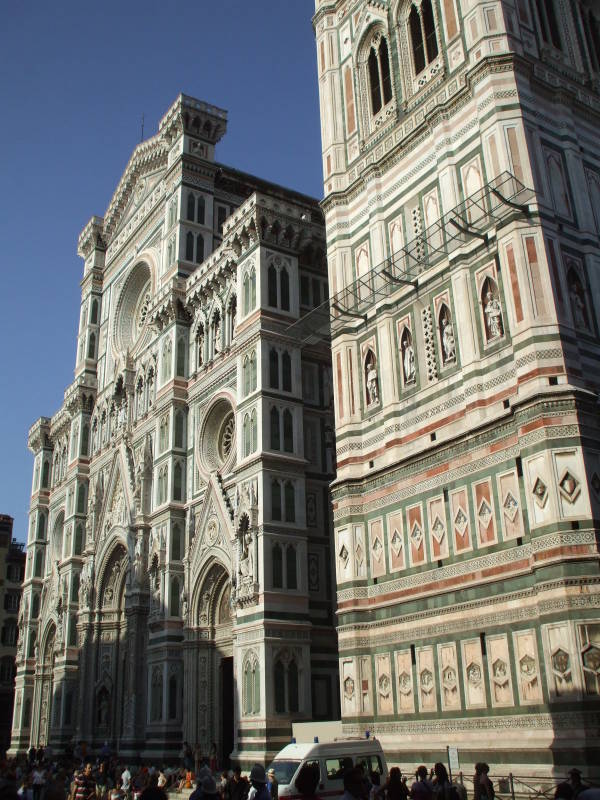

Amazon
ASIN: 1631216651
Amazon
ASIN: B078JTN23J
The brick dome of the Duomo was the largest dome in the world until the modern era, and it remains the largest brick dome ever constructed.
The city was founded across the Arno river. The Roman Via Cassia crossed the river at its narrowest point, and the first bridge was probably built by the Romans.
Replacement bridges followed. A document from 996 is the first known written record of the bridge of that time. Now it's spanned by the Ponte Vecchio, which simply means "old bridge".
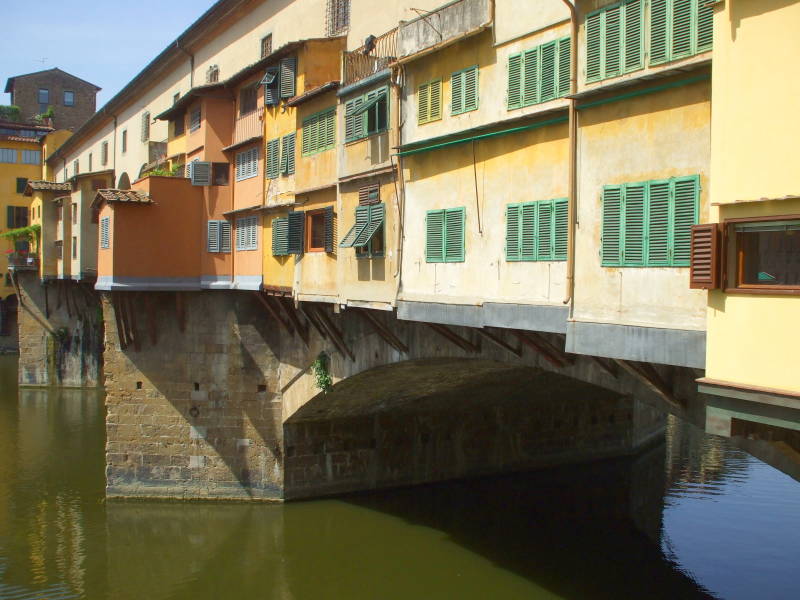
The Arno can change from almost dry to near flood levels within a few days. It flows down out of the Apennines, where its flow can vary from 0.56 to 3,540 m3/second.
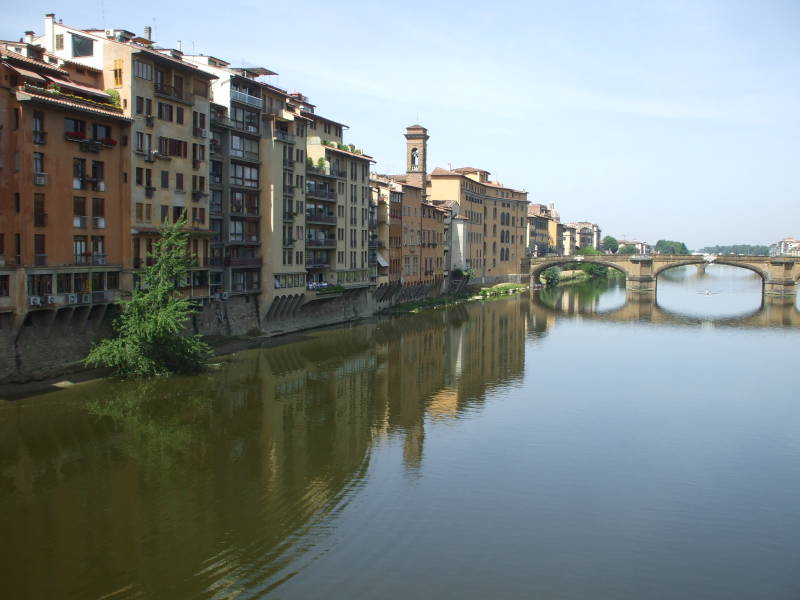
Mercado Centrale
Let's visit Mercado Centrale, the central market hall in Florence.
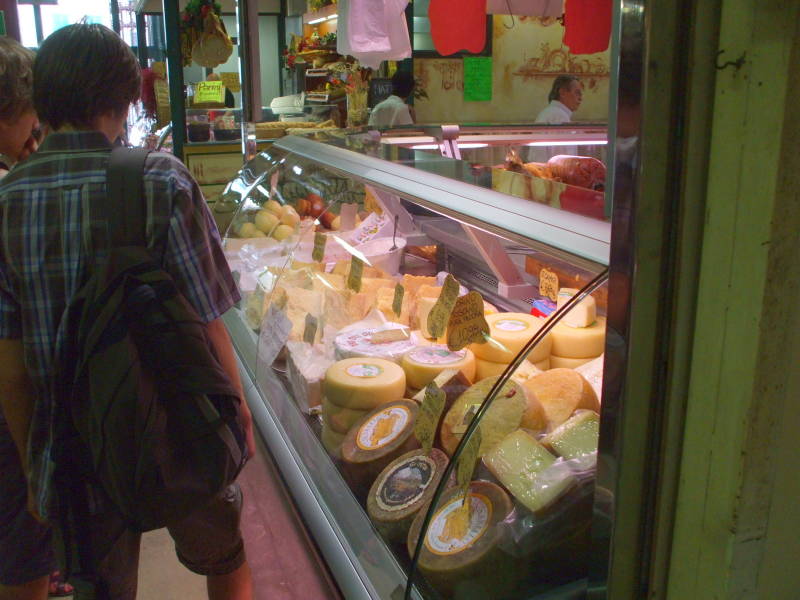
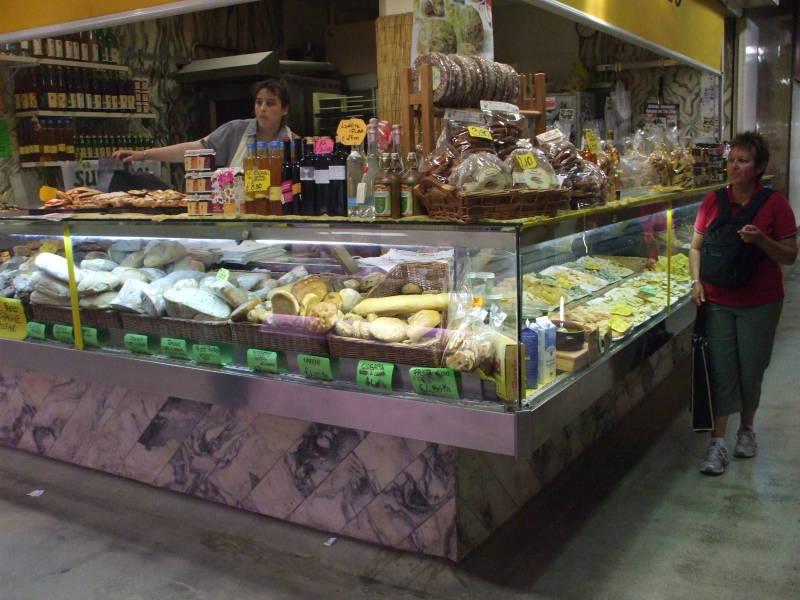

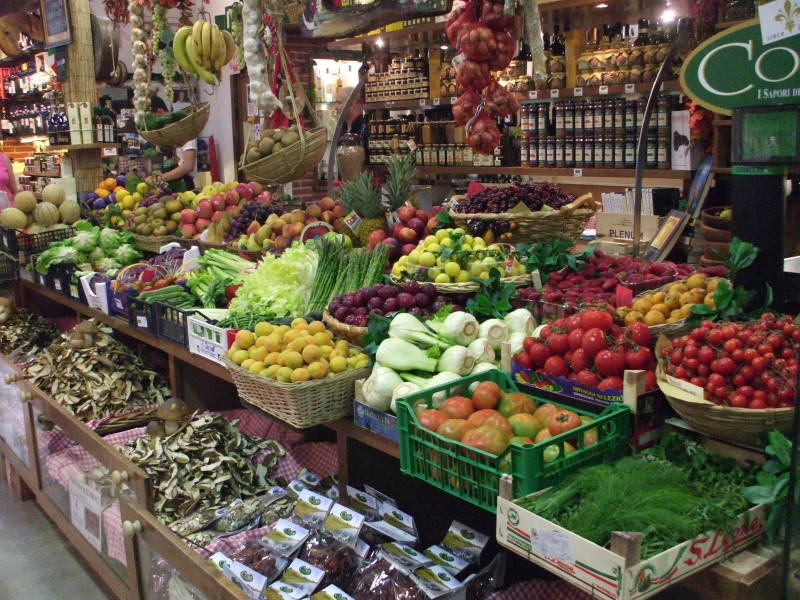
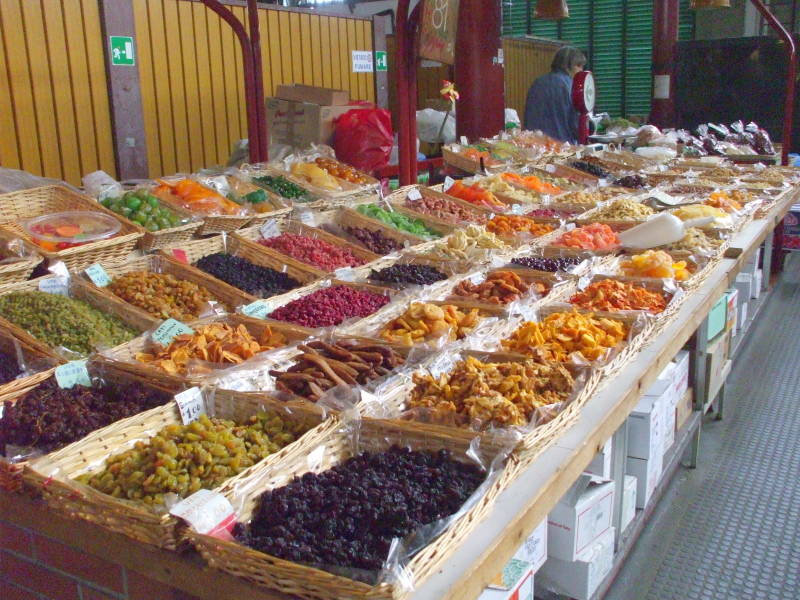
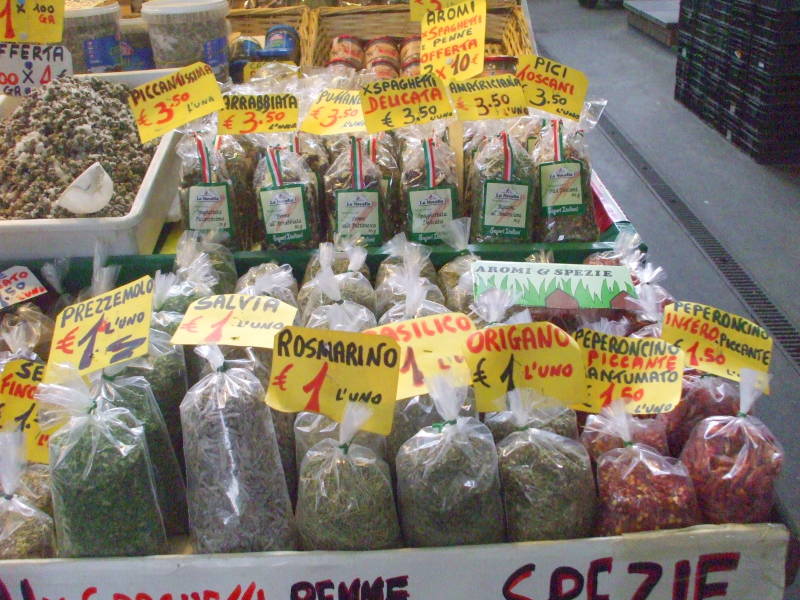
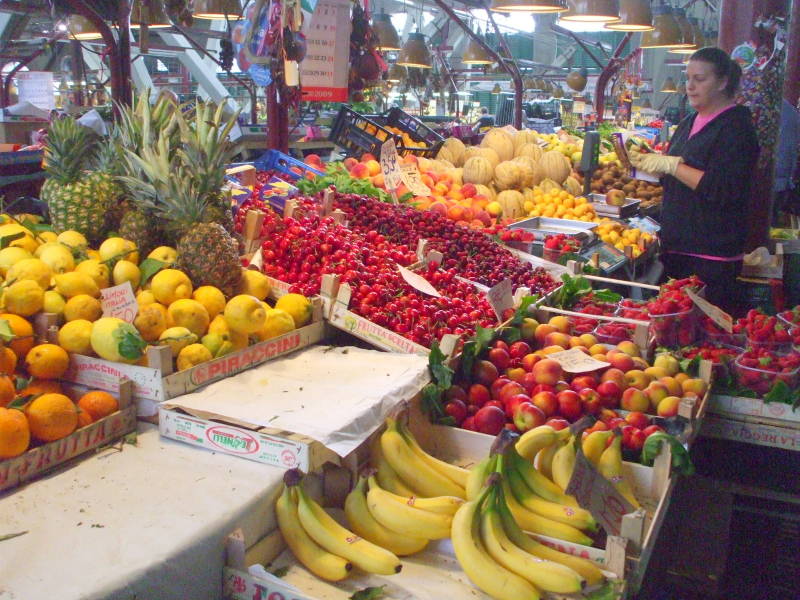
Traveling Through Tuscany
Florence is well-connected by train to Rome to its south, Perugia and Umbria to its east, and the beautiful Cinque Terre and the coastline to its west. But you will need a rental car to visit the hill towns in Tuscany.
Long-delayed traffic tickets in ItalyBe careful. Italy has a very aggressive system of automated traffic cameras, and it seems that Florence is the worst.
Do not drive within the city of Florence.
The chaos and unfamiliarity of Italian city traffic will lead you into a small error that will result in a heavy fine that you cannot fight or avoid.
Either rent cars one day at a time from a location outside the city, or find some way to park the car on the fringe of the city and take alternative transportation between your remotely parked car and your hotel.
Siena
Siena is a small city, not a hill town, with a population of about 54,000. Like other Tuscan settlements, it was first settled by Etruscans around 900-400 BCE. The original Etruscan tribe was the Saina, leading to the Roman town named Saena Julia that was founded during the reign of Emperor Augustus. It was settled, but not prosperous, as it wasn't near a major road. Christianity didn't show up until the 4th century CE.
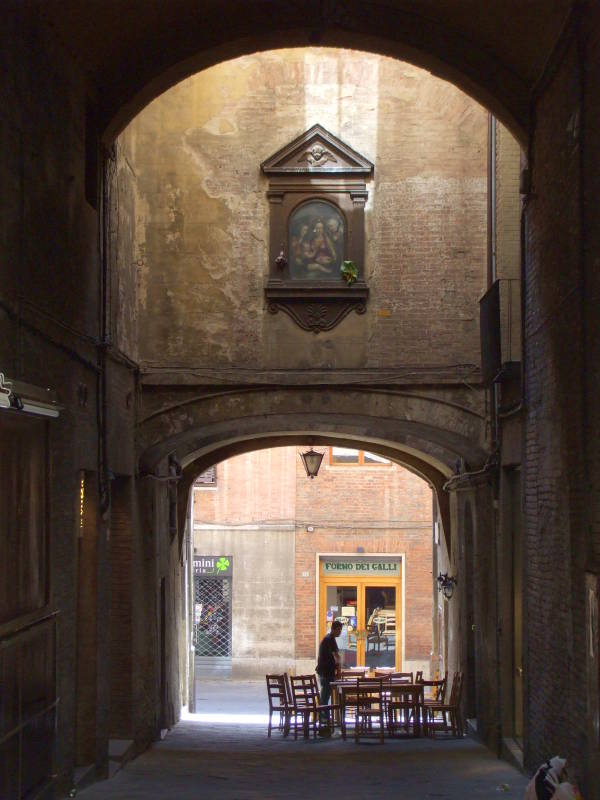
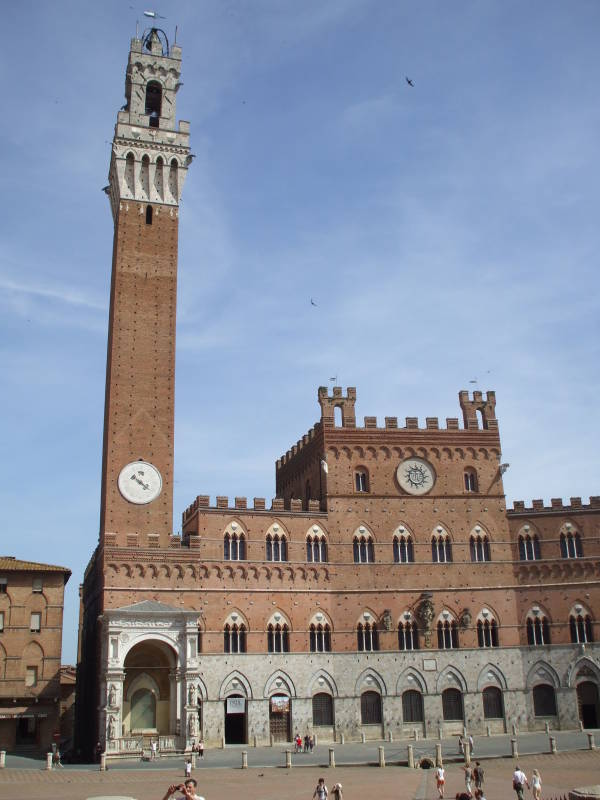
The Piazza del Campo is the large, sloping, shell-shaped square with the Palazzo Pubblico and its tall Torre del Mangia.
The Palio di Siena happens here. It's a horse race dating from medieval times. It takes place around the Piazza del Campo twice each year, on 2 July and 16 August, two Marian devotion days.
The race involves ten horses and bareback riders wearing colors of ten of the seventeen city wards. A thick layer of soil is laid down to form a track around the piazza. The race is for three laps around this track, usually lasting no more than 90 seconds, and often with multiple jockeys thown off their mounts and the horses finishing without riders.
The piazza is lined with cafés where you can sit and watch the tourists wander the area of the dangerous race.
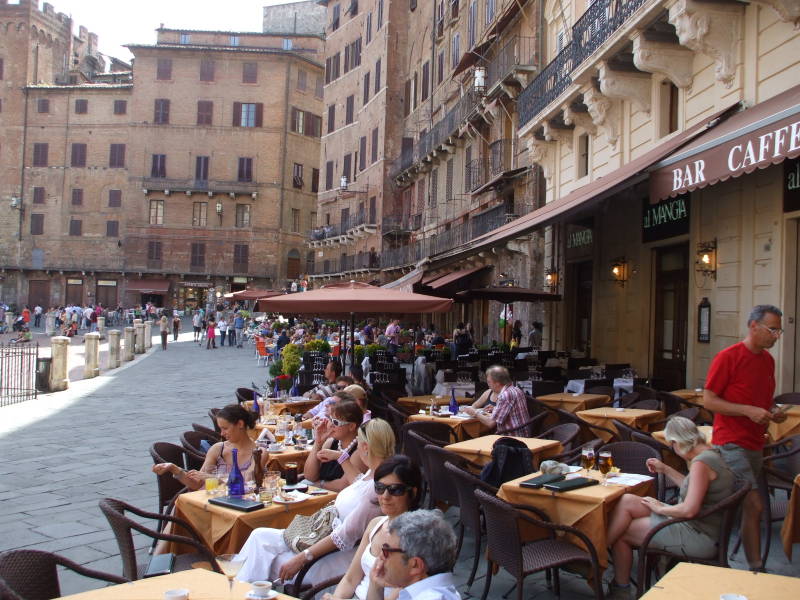



San Gimignano
We're on our way through the vineyards of Tuscany to San Gimignano.

Vernaccia is a white wine made from the Vernaccia grape, which is grown around San Gimignano. It has been considered one of the finest Italian white wines since Renaissance times. Town records mention it as far back as 1276. Dante Alighieri mentioned it in Purgatorio XXIV, where the gluttonous Pope Martin IV ate Bolsena eels that had been pickled in the wine.
dal Torso fu, e purga per digiuno
l'anguille di Bolsena e la vernaccia.

We're getting close, there are the famous towers of San Gimignano.

San Gimignano, known as the "Town of Fine Towers", has preserved its medieval architecture. It still has about a dozen of its tower houses. In addition to the white wine, it is known for saffron and ham.
There was a small Etruscan village here in the 3rd century BCE. In the 1st century BCE, two patrician brothers fled Rome and built hilltop castles. On of the brothers, Silvio, built his castle here.
The local bishop, Geminianus, intervened around 450 CE to convince followers of Attila the Hun to spare the castle from destruction. Declared a saint for that, the settlement was renamed San Gimignano in his honor.

There were 72 tower houses here toward the end of the Medieval period. Tower-building had become the local competition, with towers standing up to 70 meters tall. The local population clearly had an edifice complex.
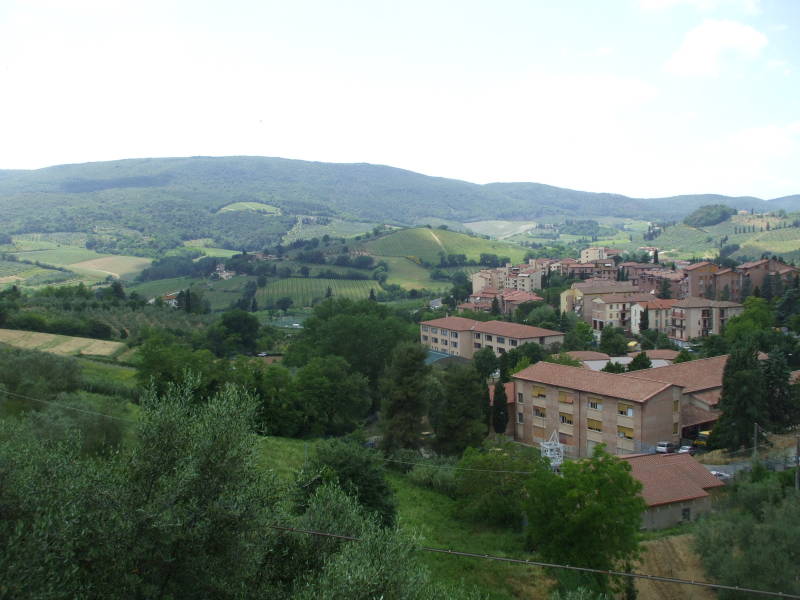
The local council finally put an end to that, with an ordinance that no tower was allowed to be any taller than the one already built next to the town hall.
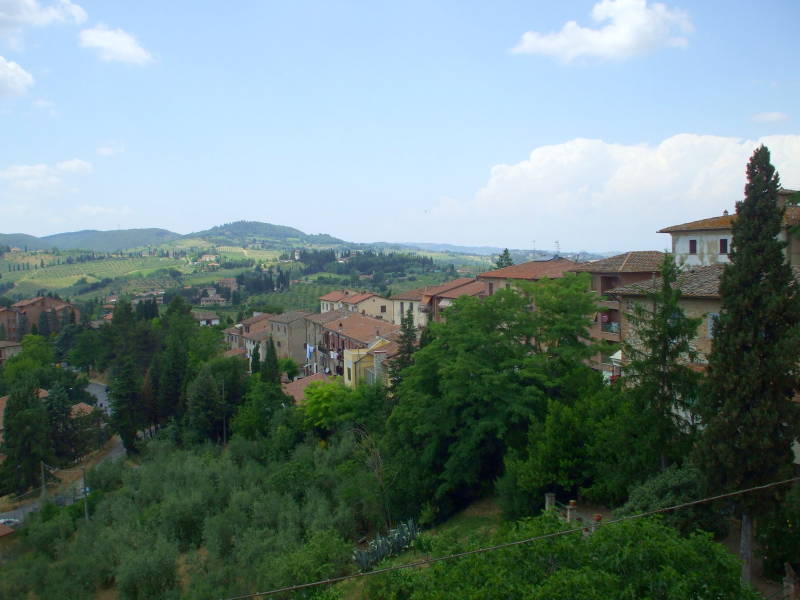
The Black Death hit the town in 1348 and killed about half of the inhabitants. San Gimignano came under the control of Florence and there was little further development.
San Gimignano remained preserved in its late Medieval state until the 19th century, when travelers and artists began to rediscover it.

Vineyards based on sandstone produce the best examples of Vernaccia, dry and acidic with a slightly bitter finish. Those wines meeting DOC or Denominazione di Origine Controllata labeling requirements are made from at least 90% Vernaccia grapes, with the remainder made up of other approved nonaromatic white varieties.
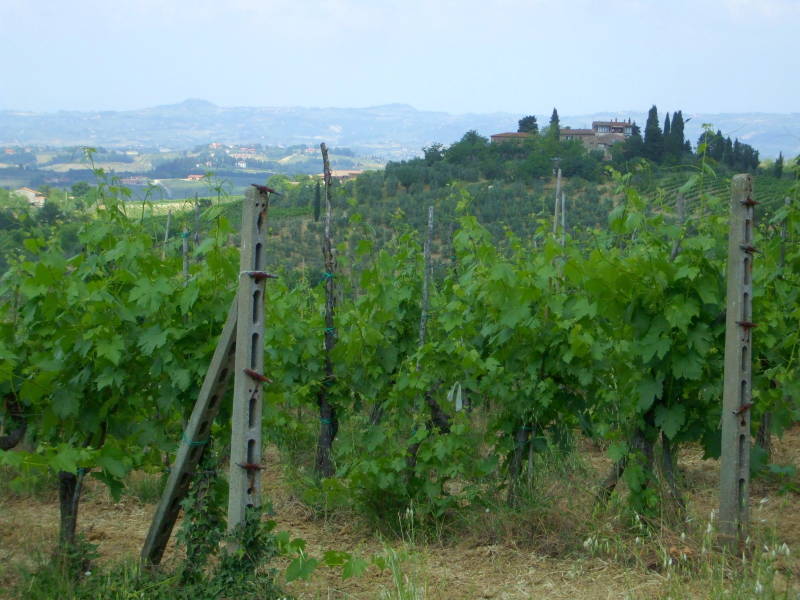
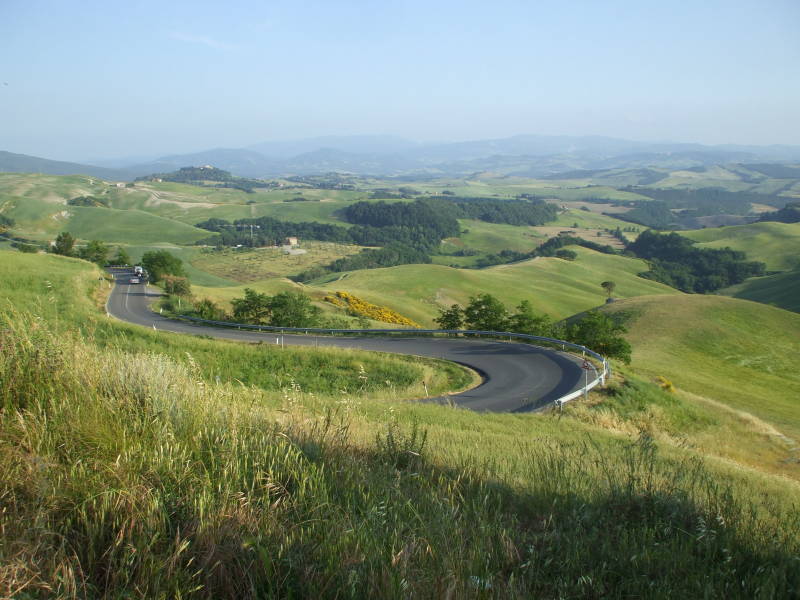
Greve in Chianti
Greve in Chianti is the principal town in the Chianti wine district. The town and surrounding area has been settled for a long time, probably from well before the Etruscans. A monastic settlement was on a nearby hill in the 11th century.

Here we are up in the hills. But this is the home of Giovanni da Verrazzano, who became an explorer of North America in the service of King Francis I of France. He explored the Atlantic coast of North America from New Brunswick to Florida. The Verrazzano Narrows connecting New York Harbor to the Atlantic between Staten Island and Long Island is named for him, as is the suspension bridge now spanning that opening.
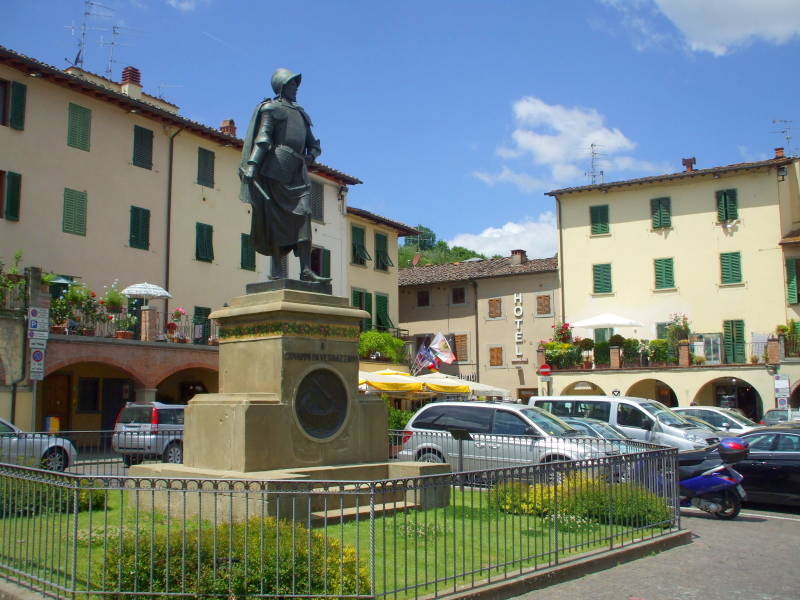
Chianti and its Hill Towns
The Chianti region extends from south of Florence to a little north of Siena. The wines from here have historically been associated with a squat battle enclosed in a straw basket, a fiaschi or "flask". Some English writers very confusingly call this basket a "fiasco".
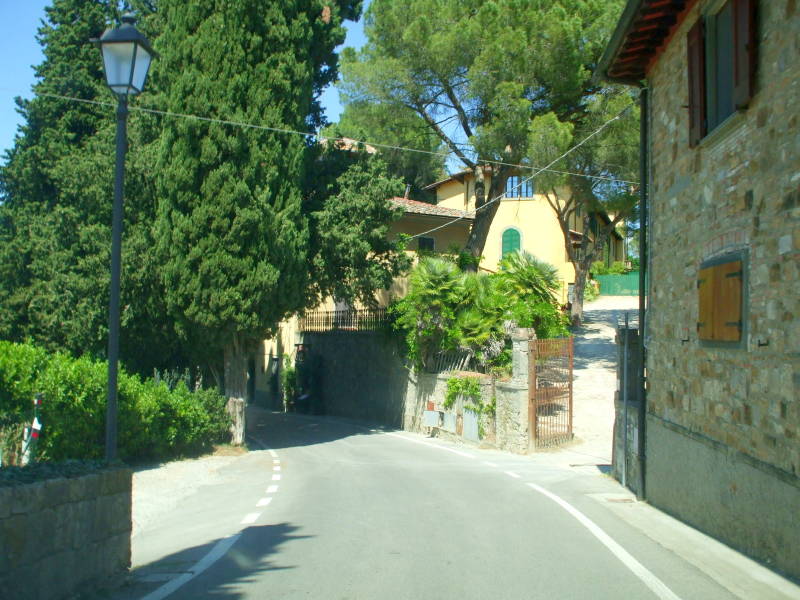
The idea of a Chianti wine region first appeared fairly recently, in 1716. It included the area around the villages of Gaiole, Castellina and Radda. This was the so-called Lega del Chianti, later called the Provincia del Chianti, the "league" or "province" of Chianti.
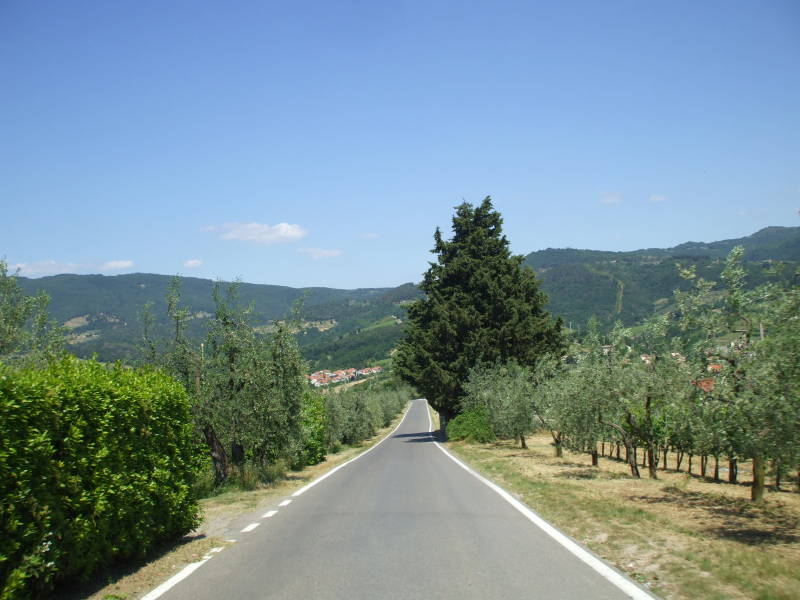

Tyramine

Tyrosine or 4-hydroxyphenylalanine.
Chianti wine is a source of tyramine, which is derived from the amino acid tyrosine. Tyramine is a naturally occurring trace amine, structurally and metabolically related to classical monoamine neurotransmitters.
Tyramine cannot cross the blood-brain barrier, so it has no psychoactive effects. However, if you're using monoamine oxidase inhibitors or MAOIs, you could have a hypertensive crisis in which your blood pressure spikes beyond dangerous levels.
Red wines and especially Chianti, cheese, cured meats, and foods with monosodium glutamate can all lead to severe headaches in people sensitive to Tyramine.
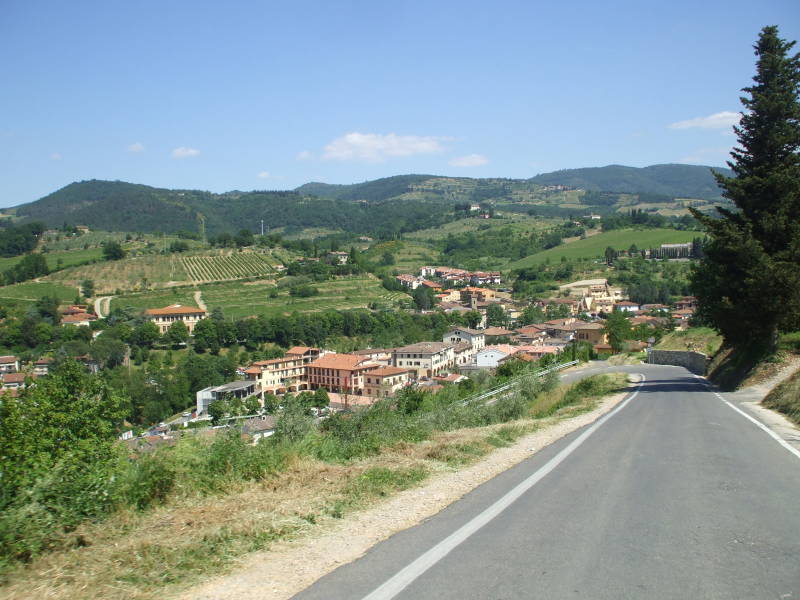
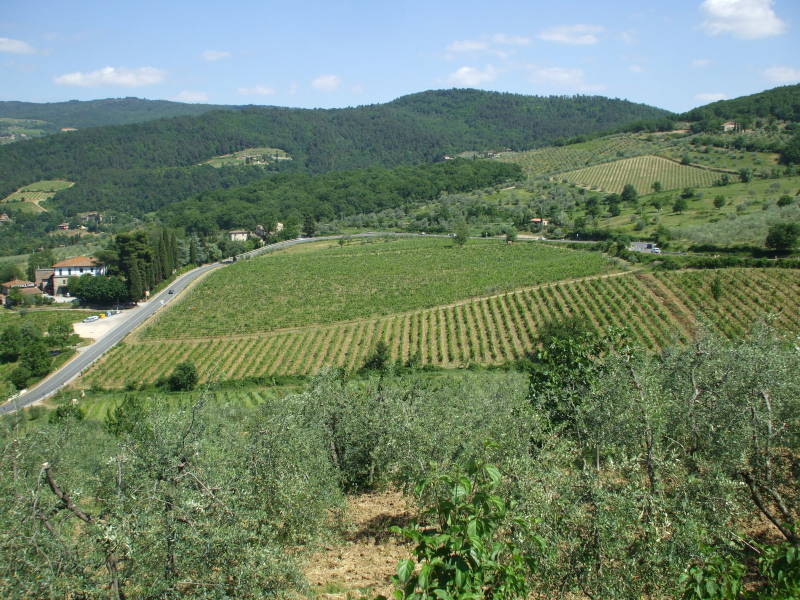



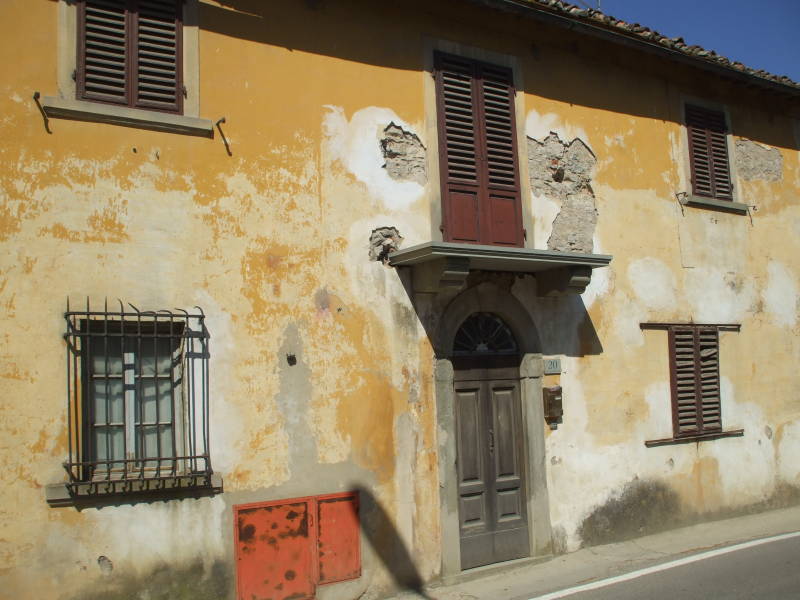
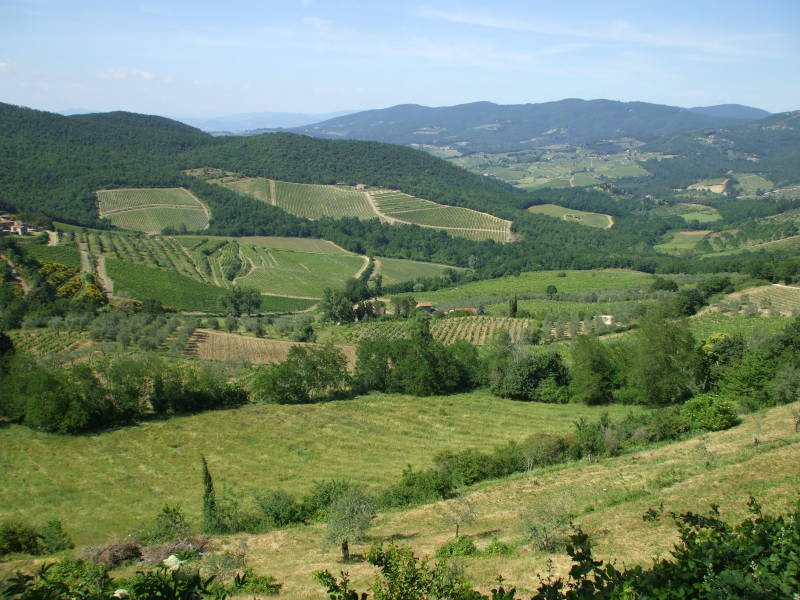
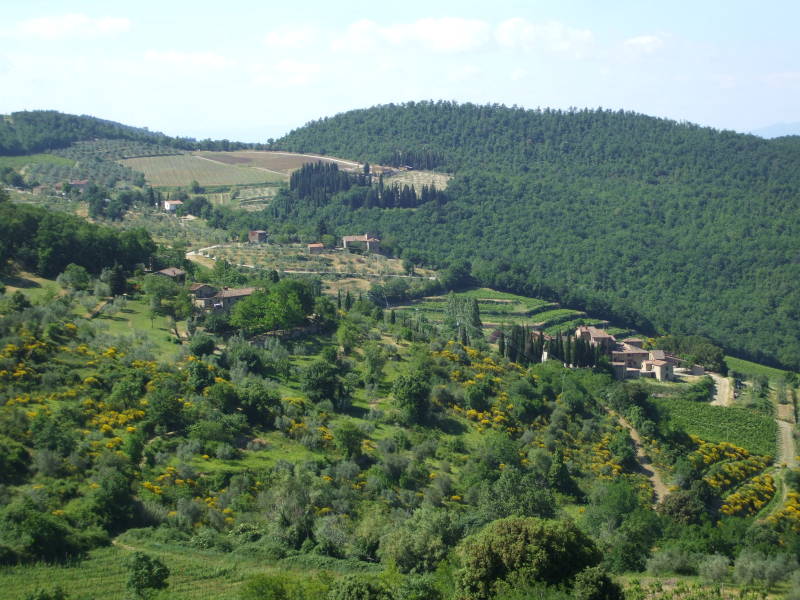
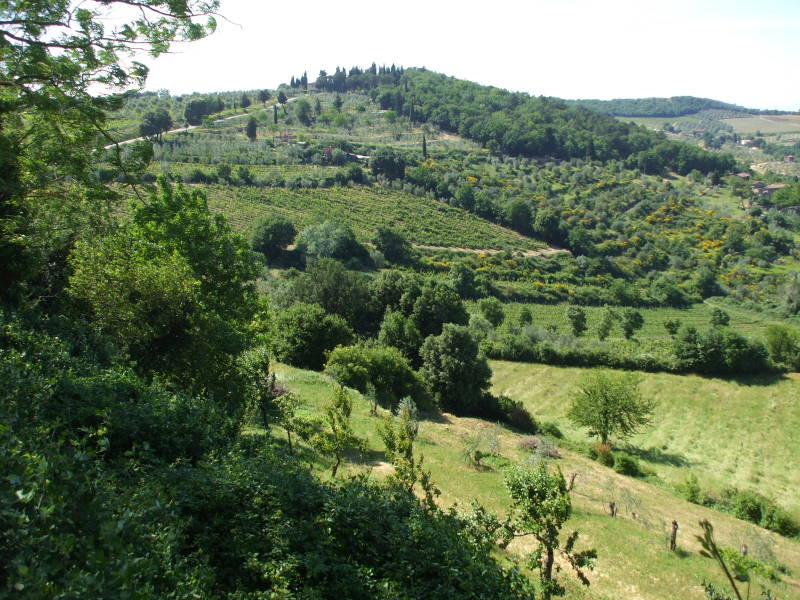

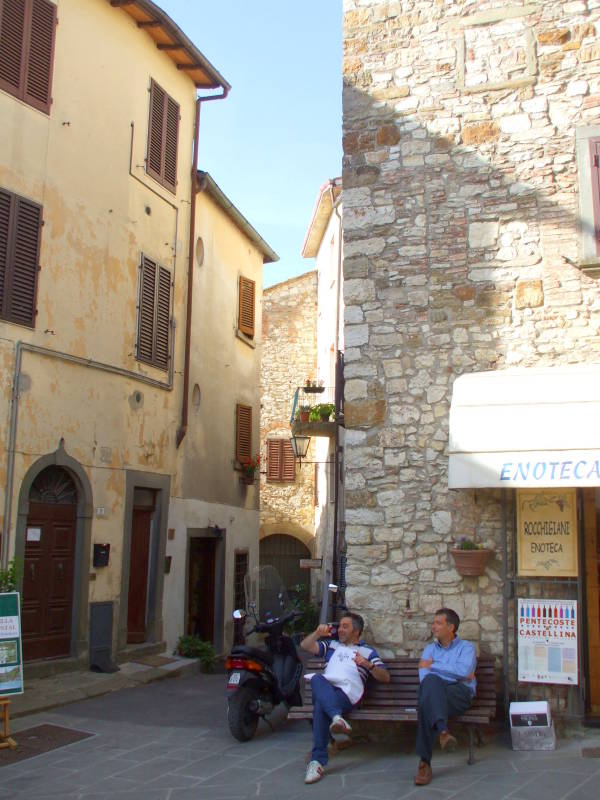
Pisa
Unpopular opinion: The Leaning Tower of Pisa is simply a failed experiment in civil engineering, just as Leonardo da Vinci's Last Supper is a failed experiment in fresco painting technique. This one didn't work, so we should try a better design.
The Leaning Tower of Pisa is the campanile, or freestanding bell tower, of the cathedral of the city of Pisa. It's 55.9 meters tall and today leans almost 4 degrees.
Construction of the tower occurred in three stages over 199 years, starting in August 1172. The design was flawed from the beginning. They started with no more than a three-meter foundation set into weak, unstable subsoil. The tower began to sink in 1178 after construction had progressed no further than the second floor.
The Republic of Pisa was almost constantly engaged in battles with the cities of Florence, Genoa, and Lucca, and construction halted for almost a century. When it restarted, they built the upper floors with one side taller than the others, giving it a curve in addition to its lean.
They finished the seventh floor in 1319. They didn't add the bell chamber above that until 1372. The set of bells was finally completed in 1655.
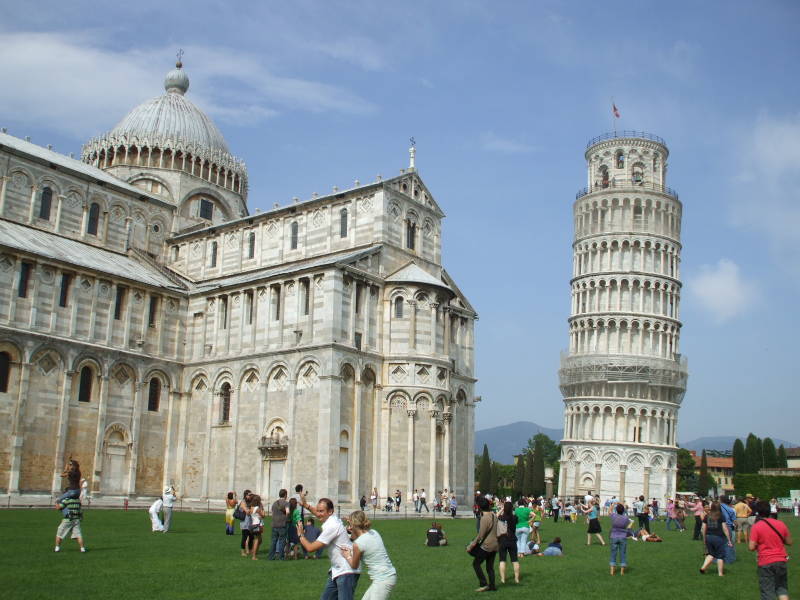
Attempts to reduce or at least stop the tilt often made it worse. By 1990 the tilt had reached 5.5°, and the tower was closed. Between 1993 and 2001, they removed 70 metric tons of soil from underneath the raised side and reduced the tilt to 3.97°. The tower reopened for public visits in 2001.
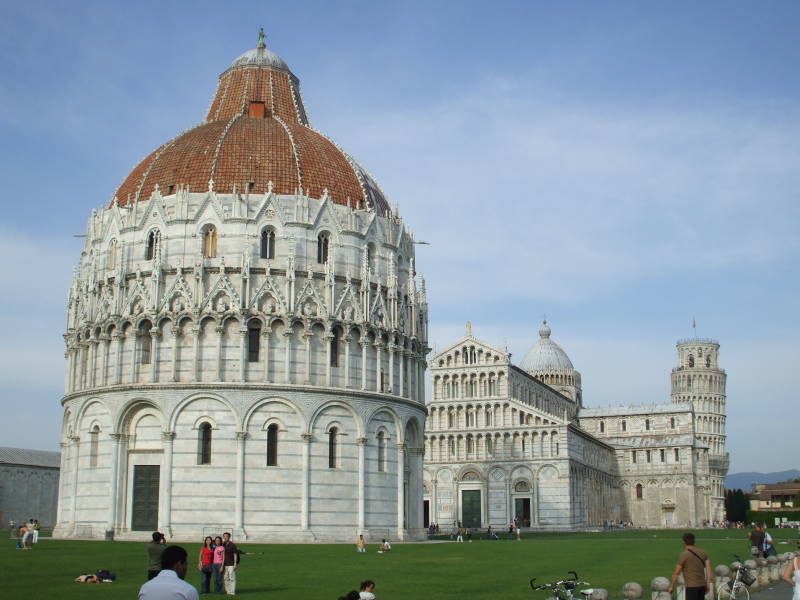
Here you see the The Pisa Baptistery in the foreground, the Pisa Cathedral beyond that, and the Leaning Tower of Pisa in the background.
Amazon
ASIN: 0375701591
Amazon
ASIN: 0553279475
Where Next?
International travel